Jason deCaires Taylor creates dynamic sculptural installations on the seabed to promote ocean conservation and confront the threats of climate change. Working with marine concrete. He combines the traditions of Land Art with the sensibility of street art, thus producing ever-changing underwater sculptures that are filled with surprise, compassion and ingenuity.
Taylor is also known for making haunting and enigmatic underwater scenes, which often depict the ordinariness of mainland life transposed to a new, fascinating environment. Instead of the entropic process, which is typically associated with the corrosive tendencies of the ocean, his underwater sculptures actually encourage organisms to grow and affect the surfaces of their creation. Thus, they are often associated with the relationship between humanity and the natural world, and the need for conservation, decline and rebirth.
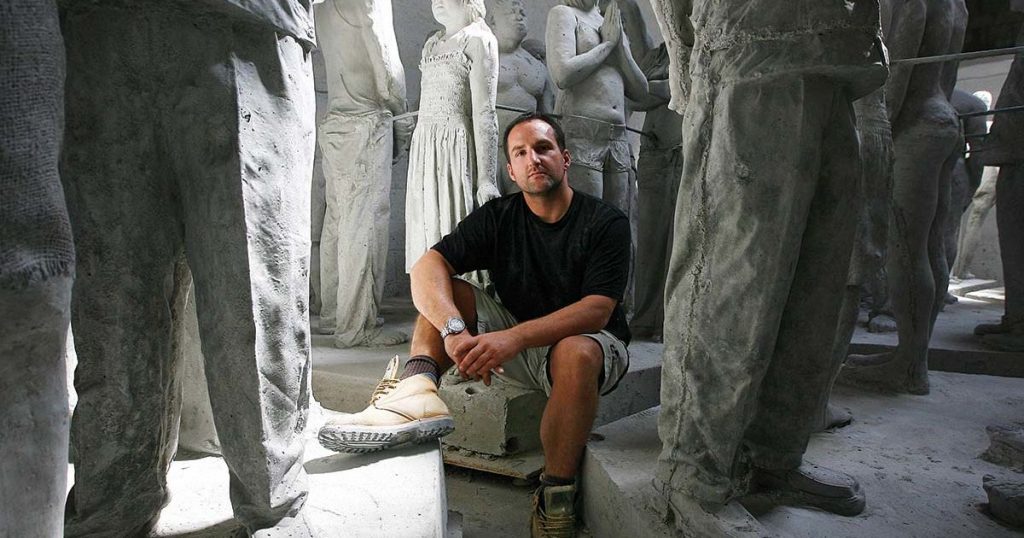
A museum of underwater sculptures, teeming with life
The ocean is his workspace, as he has been working on these underwater sculptures for more than 16 years. Some of his installations are also above sea level, but his main goal is to build an underwater museum that will eventually become artificial reefs.
It is referred to as a museum for a simple reason. Every day we pollute and overfish our oceans, while museums are places of preservation, conservation and learning. They are places where we store objects that have great value to us. Our oceans are sacred.
Jason deCaires Taylor
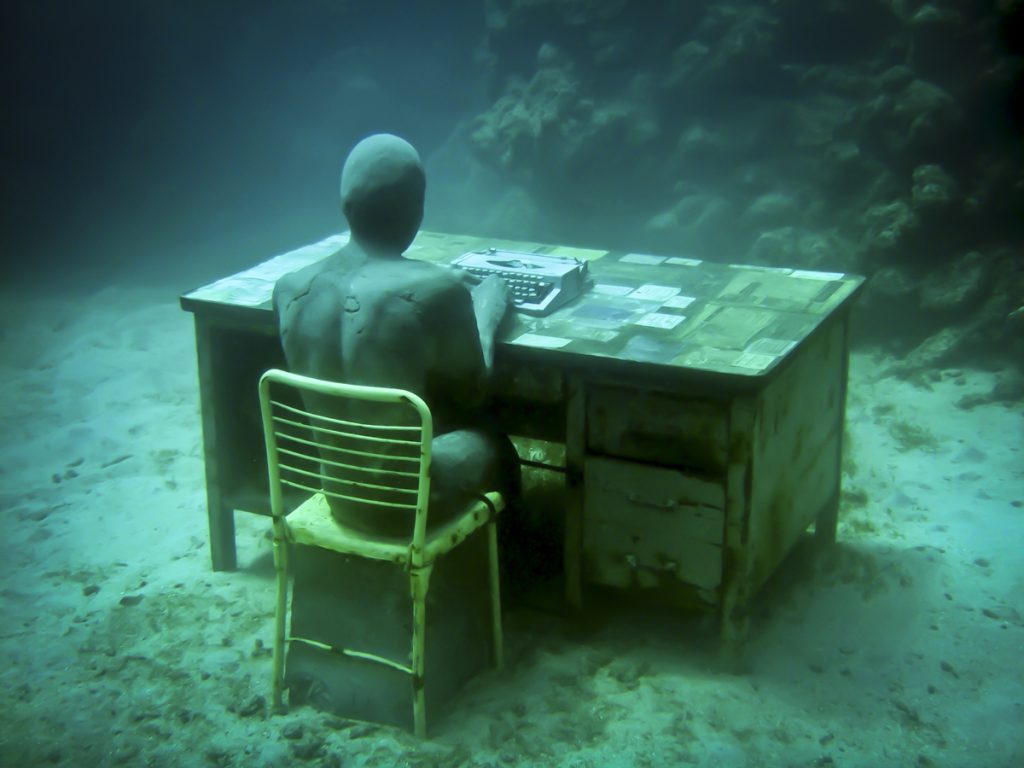
Molinere Underwater Sculpture Park
The Molinere Bay Underwater Sculpture Park was the first of Jason deCaires Taylor’s underwater sculpture parks. It was widely acclaimed as the first of its kind. The site is now featured as one of National Geographic’s 25 wonders of the world.
The 75 installations cover an area of 800 square meters and are located in a series of sand patches and ravines among natural rock formations. At depths of between 5 and 8 meters, they can be reached by diving, snorkeling and glass-bottom boats, with departures from the capital, St. Georges, and from Grand Anse, both a short boat ride away.
The Molinere Bay suffered considerable storm damage from Hurricane Ivan in 2004; thus, the existence of these artificial structures has provided a new base for marine life to proliferate. A long-lasting, pH-neutral concrete provides a stable, permanent platform that is structured to allow coral polyps to attach to the sculptures.
Vicissitudes
One of the works found in this sculpture garden is Vicissitudes, which represents a circle of figures, all joined by their hands. These are life-size casts of children of various ethnic origins. Circular in structure, the work supports strong currents and reproduces one of the primary geometric forms, evoking ideas of unity and continuity.
The sculpture suggests growth, chance and natural transformation. It shows how time and environment influence and shape the human body. Children, by nature, adapt to their environment. So, their use within the work highlights the importance of creating a sustainable and well-managed environment, a space for future generations.
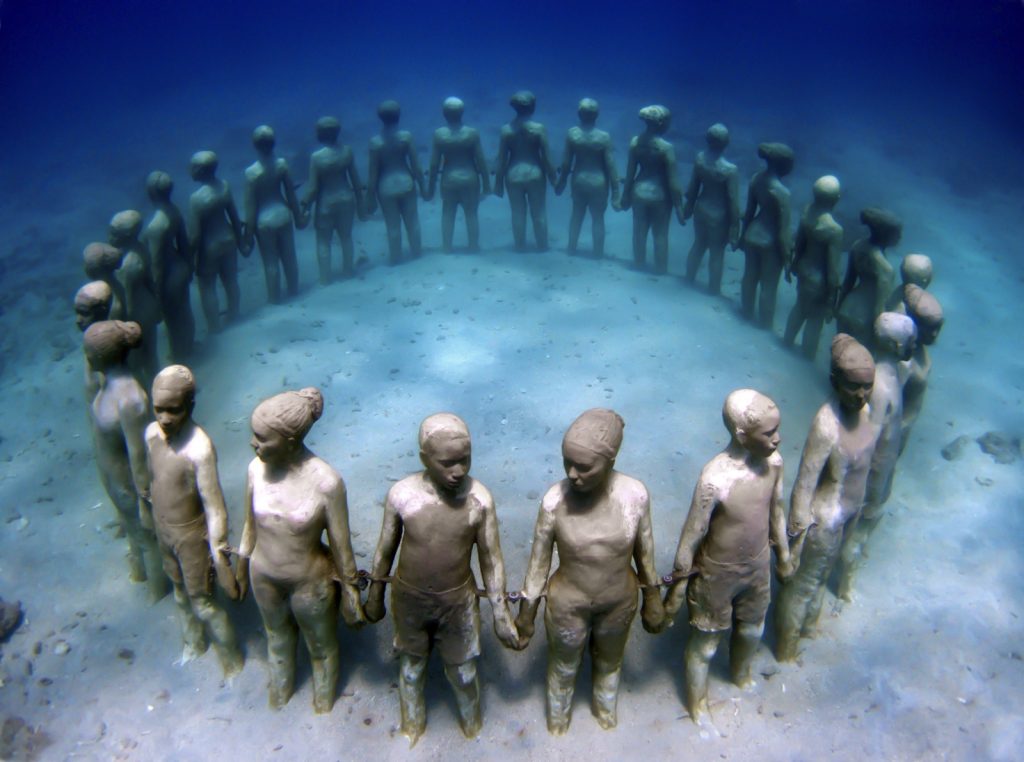
The Lost Correspondent is another piece that can be found in this underwater sculpture park. This work represents a man sitting at a desk with his typewriter. A collection of newspaper articles, dating back to the 1970s, covers the desk, some of them reporting stories from a pre-revolutionary era in Grenada’s history. It reflects on the speed at which communications have been changing. A memory of an era that belongs to the past. A reflection of the evolution of human self-expression and communication systems throughout the development of society.
Why is Jason deCaires Taylor’s work so important?
Anthropogenic greenhouse gas emissions have led to an increase in global surface temperature of approximately 1 °C since pre-industrial times. This has resulted in unprecedented massive coral bleaching events that – combined with increasing local pressures – have made coral reefs one of the most threatened ecosystems on Earth.
Most coral reefs are found in shallow, near-shore waters. Therefore, they are particularly vulnerable to the effects of human activities.
The rising ocean temperatures and the changing ocean chemistry are the most important global threats to coral reef ecosystems. These threats are caused by higher atmospheric temperatures and increased levels of carbon dioxide in ocean waters.
Coral reefs harbor the world’s greatest biodiversity of all ecosystems. Despite covering less than 0.1% of the ocean floor, reefs are home to more than a quarter of all marine fish species, as well as many other marine animals. In addition, reefs provide a wide range of ecosystem services, such as subsistence food, flood protection, and support for the fishing and tourism industries. Their disappearance will thus have economic, social and health effects.
The underwater art revolution.
The idea that human evolution could have originated in the sea is an inspiration, as if one could go back to that very beginning. It seems disturbing that mysterious exchange between life and death.
Art can generate such contradictions, for example, by submerging a human civilization made of concrete in the water, to then see how marine life invades these sculptures and weaves a mantle of life that brings them back to life from their former inert selves. It is a sort of metamorphosis, similar to that of butterflies. The sculptures are like larvae that bloom under the effects of the marine biomass. It is like the beauty of the ruins when they are consumed by plants.
There is a seductive power of decline, but it is even more extraordinary to witness the life-giving power of nature. Humanity seems fragile in the face of the vastness of the ocean. And submerged in the water, one loses all sense of temporality. Perhaps the greatest mystery is this gap between space and time. Past, present and future blend and merge into life and death.
In 2015 Jason deCaires Taylor did a TED talk in which he explains his stance on art and the ocean (Here).
If you are interested in art that carries a strong message about how climate change affects the oceans, then you may also be interested in this article about hyper-realistic pastel drawings of glistening icebergs, arctic waters and tropical waves. (Here)
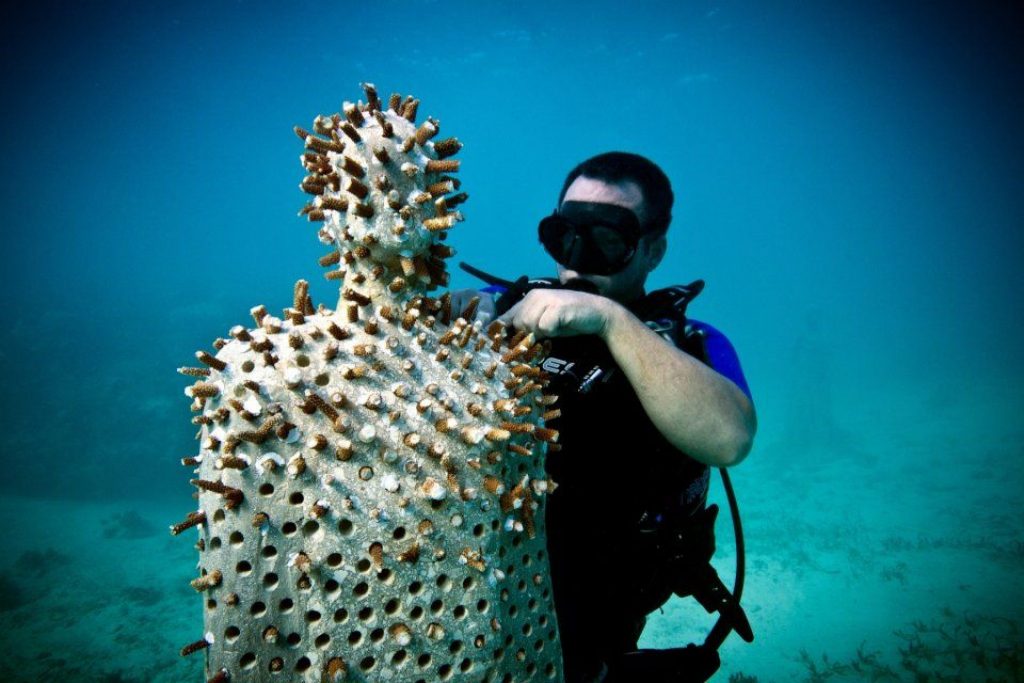
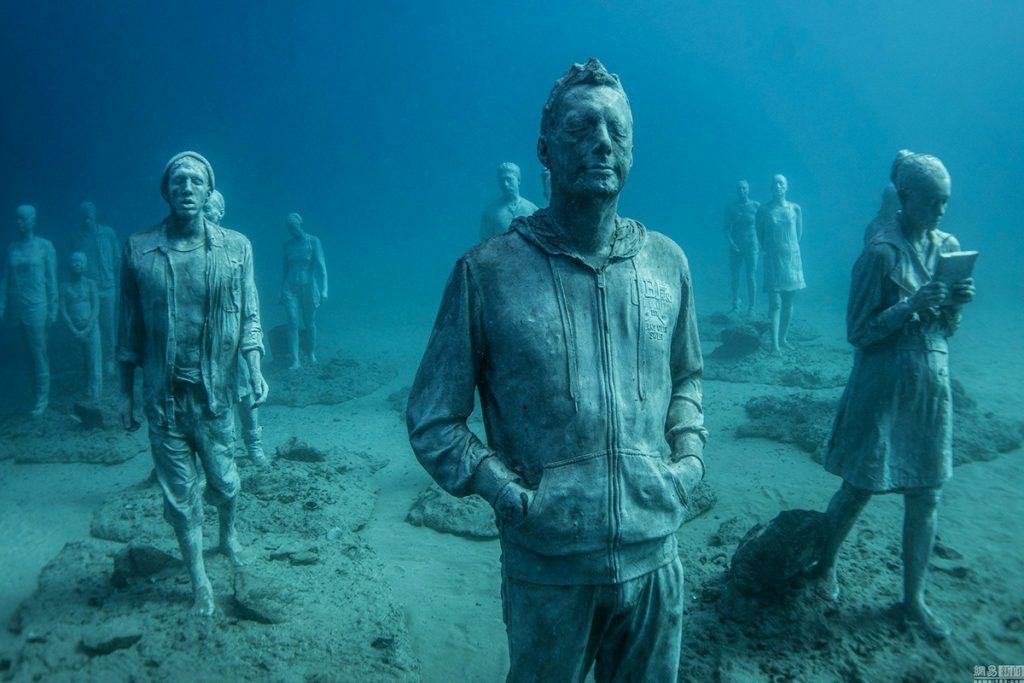
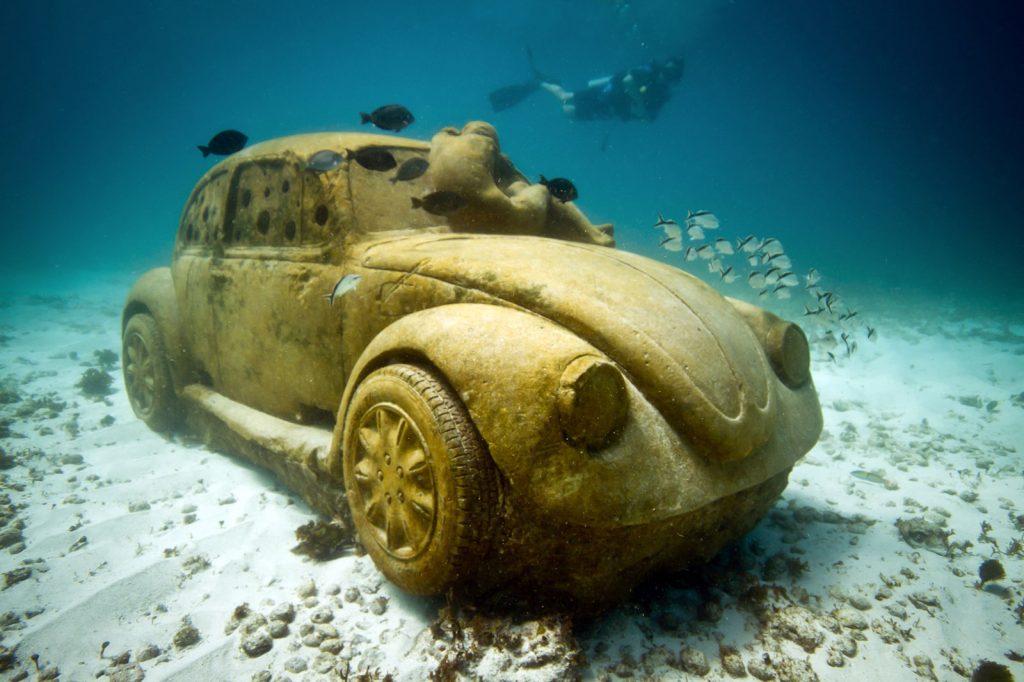


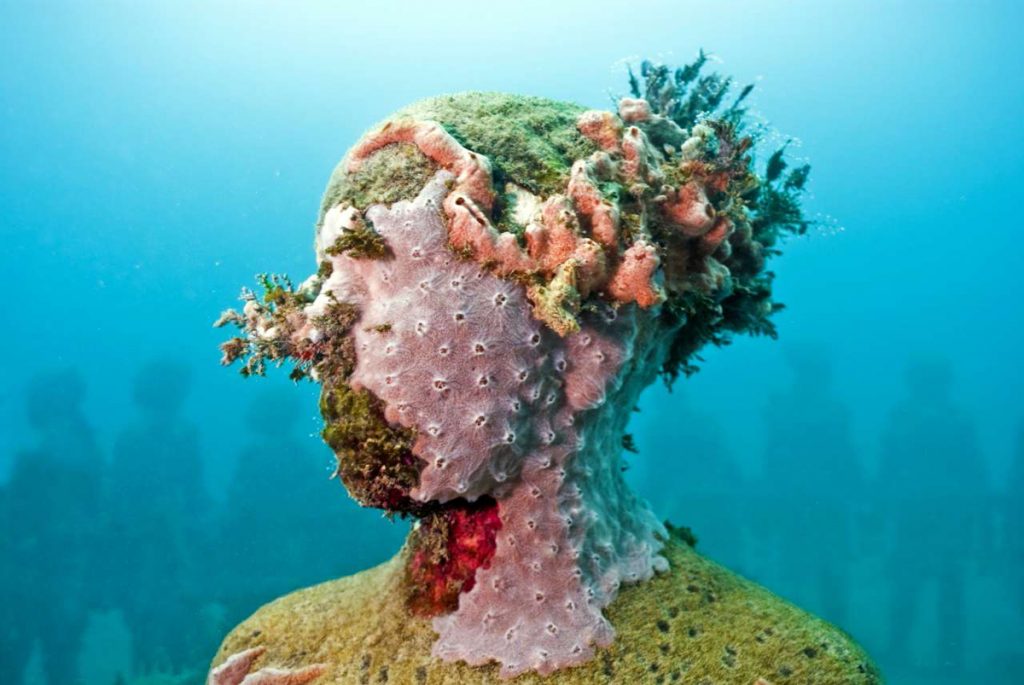
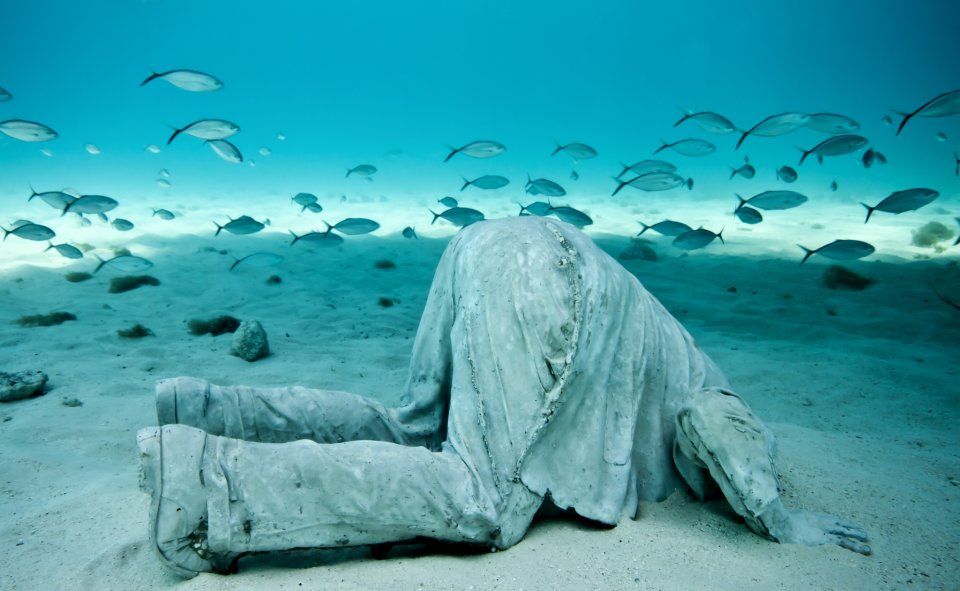
Underwater sculptures





